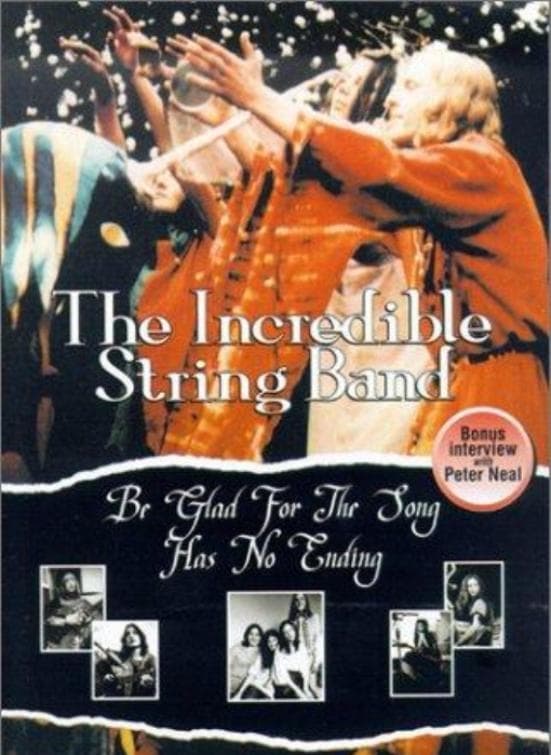
Be Glad for the Song Has No Ending is the eighth album by the Incredible String Band, featuring Mike Heron, Robin Williamson, Licorice McKechnie and Rose Simpson. It is the soundtrack for a film of the same name, and was released on Island Records in March 1971, failing to chart in either the UK or US. It would be the first album from the band on the Island label and the last to feature Joe Boyd as the producer.
16 May Be Glad… (1970)
Woven Tongues
I encountered one of those popular psychology ideas recently, the one that says that the music that was on the radio when you were 13 determines your taste in music.
I supposed it could be true. I have a deeply sculpted life in cinema but music just flows in to be ‘liked’ or not. So I checked it out and found this not to be true.
So what was? My cohort, I think, really only started to listen intently to The Beatles and Dylan, and I am ordinary in that regard. But there is something deeper in my musical soul, and the more I examined it, the more I realised that they were only adopting personas they found elsewhere, in places I also found.
I first heard the ISB from a friend who had purloined studio recordings of ‘5000 Layers of the Onion.’ This was before ‘Sgt Pepper’ appeared and it was explained that the Incredible String Band was a major influence on Sgt Pepper and when that album appeared it made great sense. Paul would champion them, thus incorporating ‘The Fool’ and tarot into their music and lives (and hence ours).
Realising this, I sought out a film, any film about them and came up with this. It seems to be a BBC documentary that was never aired. The first part consists of a few stage performances and interviews. The second is a costume drama they and friends act out in amateur style with their music overlain. If you thought the ‘Magical Mystery Tour’ film was tweechedelic, this is a level beyond and I cannot really recommend it (except for the haunting refrain over the credits, starting at 46:54).
But the first part is precious, as deep as the records before Woodstock (that is, before Scientology ruined them). If you do not know them, what we have are two Scots, musical geniuses, masters of dozens of instruments. They have been through the Moroccan transformation that was still possible in that era and were temporarily holy men, delivering a synthesis of world wisdom. It actually works. It does. Their girlfriends Licorice and Rose are transcendent beauties in plain bodies. Apparently living with their men bestowed miraculous learning powers because they are full musical partners.
I saw them in 1967, in a small hall in Boston. They were hypnotising in how they accepted the moment and seduced into the same. It was the most powerful musical experience of my youth, which is saying a lot because that summer included The Doors, Dylan and Jimi Hendrix.
The words seemed more insightful and rare at the time than they do now, though I still like most of them. The sounds are what we now associate with Northern African Islam, the touch is Sufism. But what impressed me so much was they way they approached the actual sounds with their mouths. The instruments were the order in the universe as they could play and pray it. The sounds were strange but there was a clear, very clear sense of what came from them. The singing was something else.
Both men had a way of placing the words around the order of the instrumental base, as if they were dancing among and through the laws of the universe. Rubato doesn’t come close to the complexity of what they did, adding extra syllables in capricious appreciation of what they discovered. Each time it seemed different. The women were the real thrill. They knew their men so well that they were able to elaborate and weave around, always following but teasing them on. The sexuality of that shared adventure was overwhelming that night, and I am pleased to be reminded of in the few songs from this comparatively later film. This was a transitional period for them: the creativity had waned and the performances become more polished. The women were still with them, but now better fed, with teeth and without the seductive voiceweaving of 1967.
But you can get a taste of them in this documentary. It may be the only thing around visually. Check it out.
Posted in 2011
Ted’s Evaluation — 3 of 3: Worth watching.


No Comments